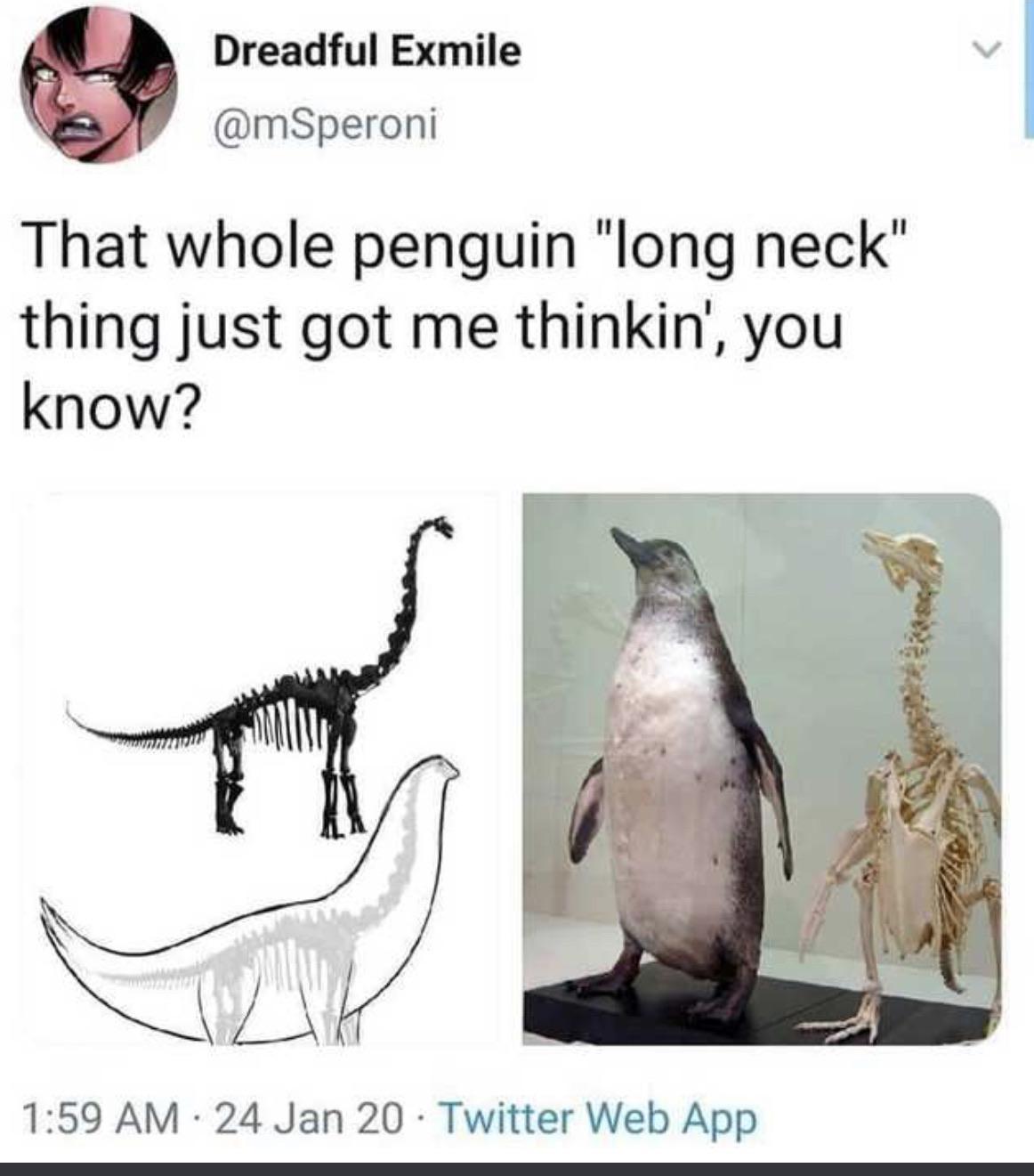jurassic-james:uncle-beanbag: v0idbird:autumngracy:amuseoffyre:My money says that’s what
jurassic-james:uncle-beanbag: v0idbird: autumngracy: amuseoffyre: My money says that’s what plesiosaurs were like: fast underwater, extra padding for buoyancy, long neck. Look at their skeletons! It’s just like this: They’re basically large horizontal penguins with a long tail and spiky teeth. OH SHIT THEY PENGUINS!! OH SHIT PLESIOSAUR PENGUIN!!!!!!!!! This is the inherant problem with most reconstructions. It’s just unknown how much fat the animals really had. Except it’s not, always, and we do have ways to infer or estimate. While shrinkwrapping, yes, has been a problem in palaeoart before, we are doing better. Many modern palaeoartists, such as Mark Witton and Emily Wolloughby, are far more mindful of representing proper body mass and soft tissues.Things such as fat distribution, body shape, and mass, can be calculated by studying bones, or even seen if we happen to get a well preserved specimen with soft-tissue evidence. We actually do have some soft-tissue fossils of plesiosaurs!A penguin-shaped plesiosaur is unlikely for a few reasons. For one, plesiosaurs and penguins swam in very different ways. Secondly, the widely accepted hypothesis for the very long neck of plesiosaurs, is to reduce their profile in the water and allow them to ambush shoals of fish - hence why they are usually reconstructed with such thin necks.While ideas like this are fun for a bit of a laugh, don’t dismiss the very real science that goes into palaeontological reconstructions.Plesiosaurus dolichodeirus by Mark Witton, showing a non-shrinkwrapped idea of what plesiosaurs may have looked like - including a tail fluke not often found in popular reconstructions. -- source link
